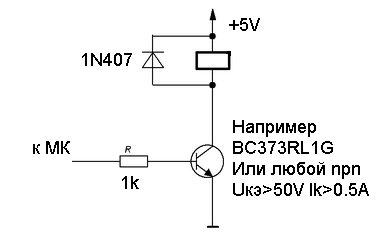Answer the question
In order to leave comments, you need to log in
Automatic USB flower waterer
Good afternoon!
Tell me, there is a desire to make an automatic watering of flowers (a flower), there is a computer constantly on (standing right next to the flower), so I don’t want to buy a separate device, I want to have a USB device to which you can connect a humidity sensor and a valve, it is desirable that a USB device there were already drivers (libs) so that the device itself did not need to be reflashed. I would like to have a device out of the box, solder a sensor to it, solder a valve to it (a relay is not the point), plug it into the port, start the studio, import the library and immediately see the sensor readings and be able to control the valve. Does such a thing even exist?
The closest on the topic that I found is microsin.ru/content/view/655/44/ , but there you need dances with a tambourine.
Generally looking for:
1. USB device
2. Humidity sensor that can be plugged into the ground
3. Valve that can withstand the minimum water pressure (bottle 5 liters)
Answer the question
In order to leave comments, you need to log in
A thyristor or solid state relay will not work. As already mentioned, galvanic isolation is required, in your case it is only a two-contact electromechanical relay. Suitable power relays with contacts 2A, 2B, 2C coil voltage + 5VDC, switching current from 2 to 12A, switching voltage ~ 250-~ 277VAC. You can look towards 553290120020 (FINDER), TRIL-5VDC-SD-2CM-R (TS), TRIH-5VDC-SD-2CM-R (TS), G2RL245DC (OMRON), CH2-MA200/220F (TS). It is mandatory to switch both zero and phase + mandatory installation of a fuse in the ~ 220V circuit. And for greater safety, the RCD, so that if your fingers accidentally get into ~ 220V, or a pet sticks its nose, then there is nothing bad. The coil current can be from 100 to 200 milliamps. You need to make sure that there is an extra 200ma in the power circuit to power the relay coil.

Bipolar npn transistor can be used any other. It is highly desirable to connect the +5V power supply of the coil in the place where the +5V exit from the power connector of the board, or the legs of the stabilizer microcircuit, if it is used. This is necessary to minimize the noise induced on the circuit when switching the relay.
there are not many options besides Arduino: it will be the cheapest (if you take a Chinese clone) and the easiest to implement.
1) Arduino nano (from aliexpress about $10)
2) Moisture Sensor (from aliexpress about $2)
Here is an almost perfect option, only there are no inputs for the sensor www.masterkit.ru/main/set.php?code_id=579540
I ordered all the same such a device microsin.net/programming/AVR/avr-usb-mega16.html , I ordered such a sensor pacpac.ru/product/sen0114-moisture-sensor/ analog, the question remains with connecting the pump to 220V, how to connect ? use a thyristor or are there any better ways? Tell us who has come across and understands well in electronics, do you need something else?
It is possible without electronics - I was looking for a circuit, I found a Chinese toy. “The principle of operation of automatic watering cans is as follows: when the earth in a pot with a plant begins to dry out, air enters the flask from it, which releases the right amount of water for your plant.” I think that it is very simple to make a similar one - two tubes from a vessel with water, water flows down one at a time, air enters through the second (air and water tubes are probably a little deepened not far from each other). Water wets the earth, wet earth does not allow air to pass through, the flow of water stops.
On the Dale chip:
BC63916 TO92
BD139-10 (KT815G) TO126
BD139-16 (KT815G) TO126
2SD774
2SC2235, TO92
The very first BC63916 is the best fit
Didn't find what you were looking for?
Ask your questionAsk a Question
731 491 924 answers to any question